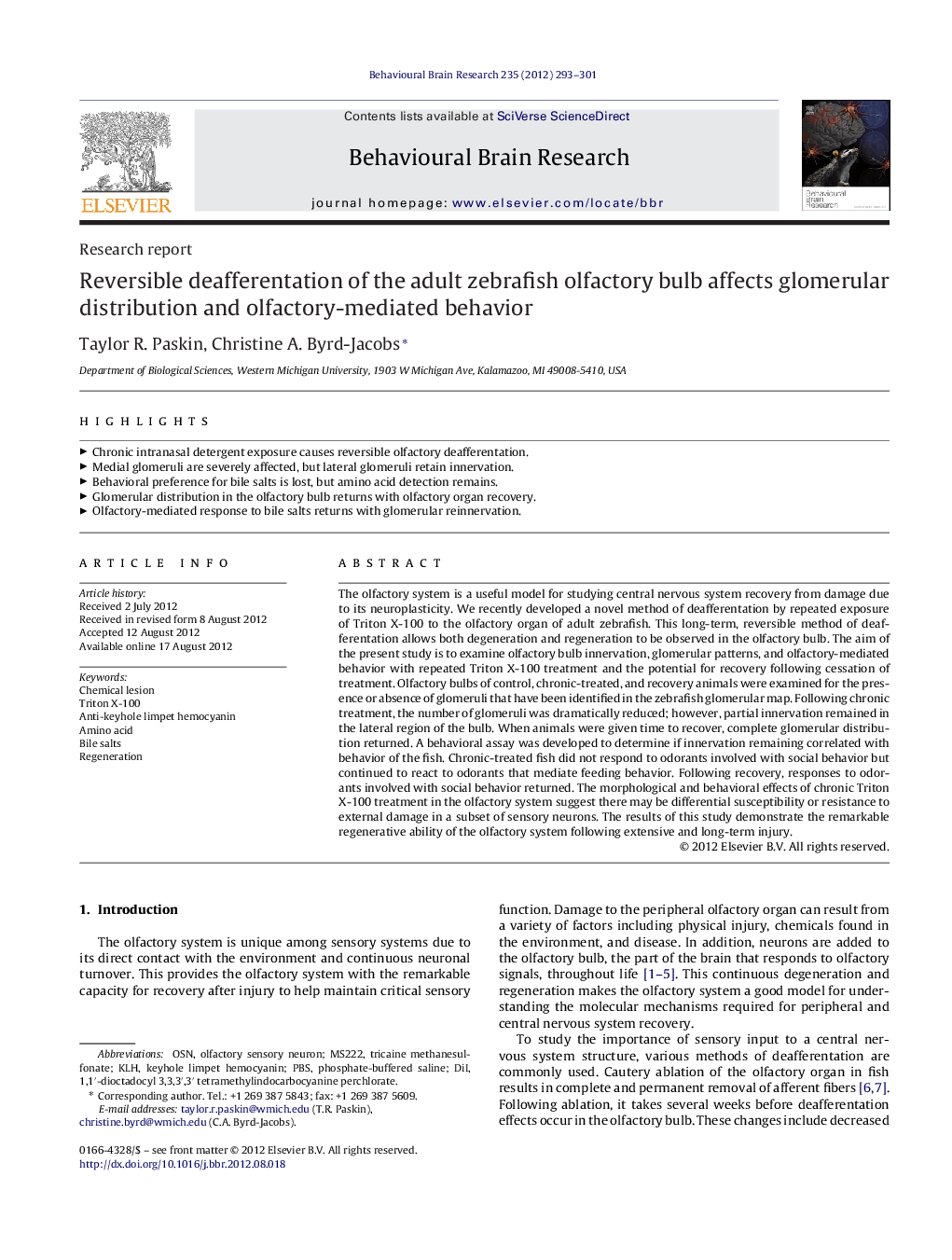| کد مقاله | کد نشریه | سال انتشار | مقاله انگلیسی | نسخه تمام متن |
|---|---|---|---|---|
| 6259286 | 1289976 | 2012 | 9 صفحه PDF | دانلود رایگان |

The olfactory system is a useful model for studying central nervous system recovery from damage due to its neuroplasticity. We recently developed a novel method of deafferentation by repeated exposure of Triton X-100 to the olfactory organ of adult zebrafish. This long-term, reversible method of deafferentation allows both degeneration and regeneration to be observed in the olfactory bulb. The aim of the present study is to examine olfactory bulb innervation, glomerular patterns, and olfactory-mediated behavior with repeated Triton X-100 treatment and the potential for recovery following cessation of treatment. Olfactory bulbs of control, chronic-treated, and recovery animals were examined for the presence or absence of glomeruli that have been identified in the zebrafish glomerular map. Following chronic treatment, the number of glomeruli was dramatically reduced; however, partial innervation remained in the lateral region of the bulb. When animals were given time to recover, complete glomerular distribution returned. A behavioral assay was developed to determine if innervation remaining correlated with behavior of the fish. Chronic-treated fish did not respond to odorants involved with social behavior but continued to react to odorants that mediate feeding behavior. Following recovery, responses to odorants involved with social behavior returned. The morphological and behavioral effects of chronic Triton X-100 treatment in the olfactory system suggest there may be differential susceptibility or resistance to external damage in a subset of sensory neurons. The results of this study demonstrate the remarkable regenerative ability of the olfactory system following extensive and long-term injury.
⺠Chronic intranasal detergent exposure causes reversible olfactory deafferentation. ⺠Medial glomeruli are severely affected, but lateral glomeruli retain innervation. ⺠Behavioral preference for bile salts is lost, but amino acid detection remains. ⺠Glomerular distribution in the olfactory bulb returns with olfactory organ recovery. ⺠Olfactory-mediated response to bile salts returns with glomerular reinnervation.
Journal: Behavioural Brain Research - Volume 235, Issue 2, 1 December 2012, Pages 293-301